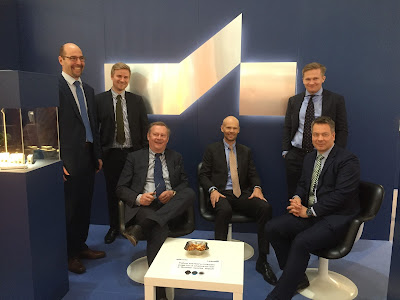How Do Counterfeits Make Us Feel? There is a problematic comparison between the consumer market and the professional market, when copying and counterfeits are in question. Every individual has heard stories of clothing factories in Asia, that are producing branded products on one production line and non-branded from the same components on the next line. Branded T-shirt is worth tens of euros in a flagship store and the same T-shirt with unknown brand is sold with less than 10 euros in a supermarket. This kind of reality is somewhat misleading in technical professional products. Most established global brands have encountered copying, counterfeit products and abuse of their brand. Now this kind of phenomena is real life for even smaller companies like KATKO from Finland. What do we think and feel about this? Feelings are not regarded as part of successful business life. At the same time, we all know, that feelings are attached to everything we do and effecting to all decisions
Posts

Do We Need Trade Fairs? When internet boomed during the first decade of this century, all businesses were supposed to move there. A couple of companies turned the idea of trade fairs to internet and started to promote digital exhibitions. There are a lot of modern arguments to support this idea: no traveling, no materials used for building the stand, free of schedules, material can be updated, product information can be downloaded, products can be purchased, etc. But: why do we still have fairs where exhibitors build stands, carry their products there and fill the stand with their personnel? KATKO Team @ Hannover Messe 2017 Simple answer is that potential and existing customers are still willing to come to those fairs. And why? Well, you would probably need a scientist of social and human behavior to give a thorough explanation, but it indeed has something to do with our ways to build relationships. We also have a need for unwritten information and a need to complete our fa

Why fill in ETIM data? The time used to sketch and design any project is getting shorter and the trend is getting towards simultaneous planning and execution. Should we resist this trend and insist on returning to clear milestones and timespans? Yes, it would be beneficial to be able to slow down and avoid mistakes, which are likely to happen in a rush. But the other way to move ahead would be to think, which parameters and procedures should we change to decrease the time spent from the beginning to the completion of the project. One certain factor is the quality and availability of relevant product data. All data is typically already existing and it doesn’t need to be created. But the problem with product data is the availability and format – all PDF catalogues existing in the internet do not communicate with purchasing or planning software. Most of existing product data does not support comparison between products. ETIM data based systems enable different comparisons and search

Counterfeit Products in Electrical Industry Counterfeit products are goods, often of inferior quality, made or sold with a brand name without the brand owner’s authorization. Nowadays, also the electrical industry is exposed to counterfeit products. Responsibility for ensuring only genuine quality products are used lies with all those specifying, purchasing and installing electrical equipment. International Law prohibits counterfeiting – free riding on names/reputations of others, receiving undue profits, providing no guarantee on defective goods. Stay ahead of counterfeiters by protecting your trademark also in China, printing Country of origin/brand name, making mould-in protected marks and by using printed packaging. Suspect ‘too-good’ prices. If in doubt, check with brand owner/certification body to be sure, since you are responsible. Also purchase only from an authorized supplier/distributor. Safety at stake, since inferior quality counterfeit electrical produc

How to Reduce Risks of Electrical Fires? Since the invention of Thomas Edison’s light bulb and Nicola Tesla’s AC current in the late 18th hundreds, electricity has become an everyday necessity in households around the globe. Even though, electricity plays such an important role in our day-to-day lives, we seldom give it too much thought – and when we do it’s usually too late. In Europe 2 - 2.5 million fires are reported each year, resulting in 20 000 - 25 000 fire related deaths and 250 000 – 500 000 fire related injuries 1 . About 80% of these fatalities occur in private homes. While smoking indoors, cooking and the use of candles represent the clear majority of residential fires 2 , fires started from electrical and heating appliances play a significant role in the statistic and can’t be overlooked. Onside of electrical fires playing a significant part of all the residential fires, they also consistently rank among top five causes of commercial building fires involving: